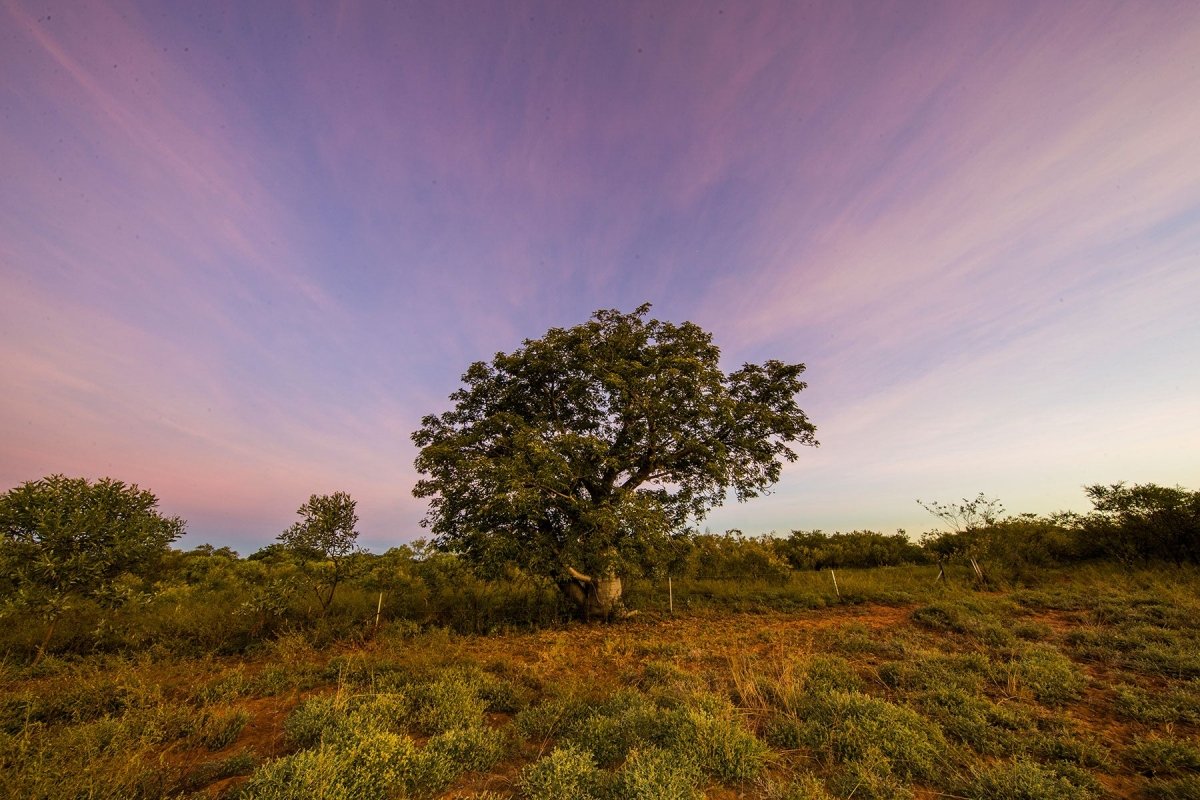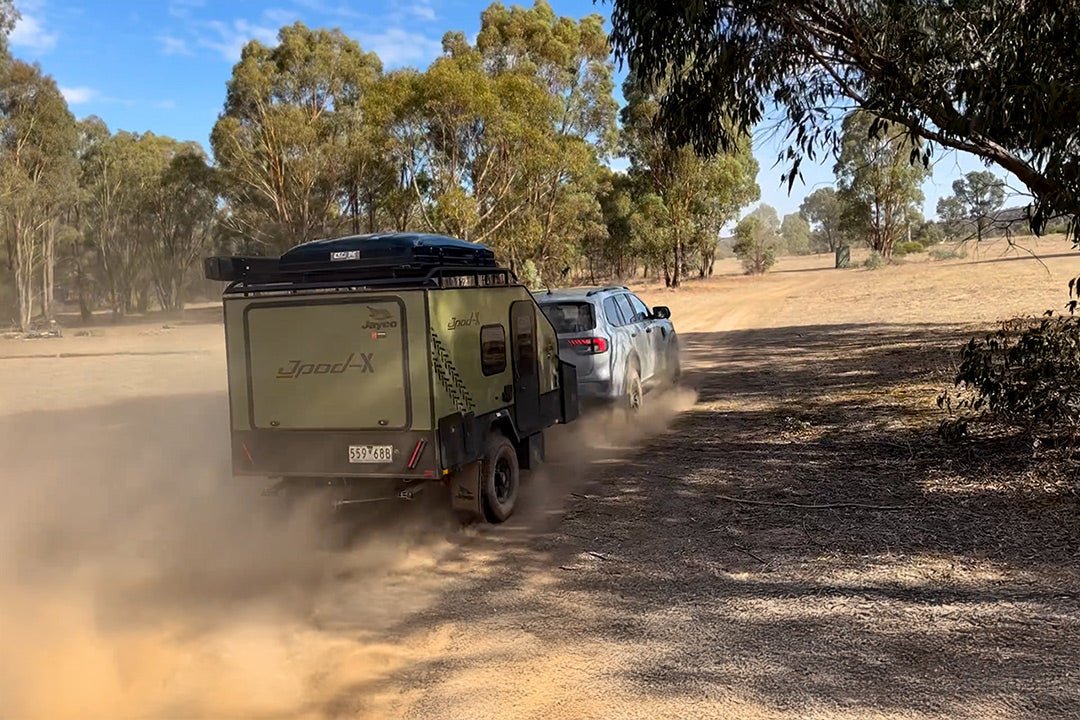Exploring the beauty of Derby, WA

Derby is rarely seen on Western Australia's mood board of dreamy destinations. It goes against the grain of the ‘stock standard’ coastal beauty the state vigorously promotes: endless white sandy shores bound by inviting blue waters. With saltwater crocodiles lurking in its murky waters, you can leave those starfish-at-the-beach days for Broome's Cable Beach, 223km west of Derby.
Instead, discover what makes Derby different. The town of 4000 is less intense, more rugged and removed. Marshes, mangroves and muddy tidal flats dominate its sceneries. Derby's landscapes satisfy curious types looking for something less shiny and tourist razzmatazz. Its wide streets are absent of bustle; leisure time is about being out there, getting hands-on.
I discovered that the deeper you go in Derby, the more colourful it gets. Its big art galleries, stencilled artworks on salty grounds, intimate storytelling of country and hidden cultural and natural fascinations make it a place to appreciate beyond face value. Compared to its Kimberley counterpart, I can attest that Derby is worth the detour.
Dirty adventures
"You'll either love it or hate it."
A local in Broome told me this after I revealed my next destination, Derby. It wasn't along the way; I deviated from the Great Northern Highway heading east to include the historic seaside town.
Derby's locale is distinctive. It sits at the mouth of the Fitzroy River and at the edge of King Sound, home of Australia's largest tides. According to NASA, its tidal movements range from 11-12 metres, the second highest in the world after Canada's Bay of Fundy. It explains its brownish tinge – a rare hue along WA's coastline. Could this be at the crux of why people seem to love or loathe it; for its rural realness, or it's not photoshop pretty enough?
Beyond its darkened shores, the town is also known as the gateway to the legendary Gibb River Road and a day trip away from scenic wonders, Windjana Gorge and Tunnel Creek, both sky-high remnants of the 350-million-year-old Devonian Great Barrier Reef system. Australia's natural phenomenon, Horizontal Falls, is a short scenic flight away from town. Extraordinary sights are on its doorstep: no beach time missed here.
It was a good call making my first stop at the Derby Visitor Centre. I was told that the trio of considerations – opening hours, road conditions and tour availabilities – could change as swiftly as the tides.
Many boabs – the Kimberley's iconic tree – surround the centre. More than just giant sentinels of the outback, boabs embody a way of life. It is the only Australian variety of the genus Adansonia. (Madagascar has six kinds, and the African continent has one). The trees are long-standing and able to withstand drought and bushfires.
I noticed a few locals sitting under the shadows of wine-bottle-shaped trees, diligently carving into the thinly shelled boab nuts. These giant sentinels of the outback embody a way of life with the creative pastime part of Derby's identity.

Derby Jetty (Image Tourism WA)
Storytime under the boab
I waited under a boab along the side of Loch Street, one of many that enshrine Derby's main strip. Its plump silhouette and naked branches did nothing to provide respite from the scorching heat.
I soon forgot about the beads of sweat slowly trickling down my body. My mind was taken elsewhere, listening to the sentimental words of local guide Edwin Lee Mulligan. With an art-filled CV in poetry, painting and theatre, Edwin provides a stirring cultural experience along his Lamartij bespoke walking tours. It was just him and me under the boab tree.
"The land is a storybook, and the sun turns its pages," Edwin said.
With that philosophical opening line, I knew it would hardly be a walking tour in the traditional sense. All jokes were put aside. It was an intimate, thought-provoking storytime session, touching on the region's Aboriginal culture, the Dreaming, humanity, and spirituality.
Over an hour, I was absorbed in Edwin's way with words. As we briefly strolled through town, Edwin slipped metaphors, recited poems conjured in his dream, and weaved heartfelt stories of his grandfather. We wound up at Derby's horseshoe-shaped jetty, looking out towards its coffee-coloured mudflats, the ocean far in the distance. I was left stirred and inspired. If you enjoy deep conversation, Edwin's interpretation of Derby will no doubt leave a lasting impression.
A colourful oasis
Another way to appreciate Derby's heritage is to see it visually.
Across the road from the visitor centre is the urban oasis, Norval Gallery. Flanked by thriving tropical gardens, it starkly contrasts its streets' lacking vibrant greenery. Its natural air conditioning effect is a welcome respite from Derby's raging winter sun. Post cool off, a multi-sensory experience awaited.
The arts centre, housed in a heritage building, is run by Derby-based artists husband and wife Mark and Mary Norval. Mark advised first watching a 15-minute documentary on how the centre came to be. From here, I had free reign to be inspired.
The gallery showcases the works of local and regional artists with dedicated spaces for sculptures and paintings. Being long-time advocates for community arts, the couple has an open-door policy for artists to express their visions beyond the brush. They encourage artists to engage with visitors at their on-site studios.

Remember the talk of boab carvings? It boasts Australia's best-carved boab nut collection – perhaps the biggest – housed in glass cabinets. Nuts brightly painted with carvings depicting life in the Kimberley so intricate I could barely see the remnants of the fallen. Some are there for the taking, with many available for purchase.
Another common sight around the multi-room gallery is the various painted versions of the Wandjina – the creation spirit – recognised by three local indigenous groups: Ngarinyin, Worrorra and Wunumbal. Besides its kaleidoscope of colour, the gallery takes creativity to the ears, with a room dedicated to offering a '70s music experience', housing over 5000 records.
I could've spent a few hours here as there was plenty of talent to appreciate and admire. Expect to leave with a slight dent in your wallet and a one-of-a-kind Kimberley memento.
Sculptures on the Marsh
Mark's impact on the Derby art scene doesn't just stay in the confines of Norval Gallery.
Derby's most prominent public art project, Sculptures on the Marsh, is moments from the gallery. Mark spearheaded the movement to add another dimension to Derby's scenery: fusing nature with art to create a sculpture art trail along the sprawling marshes.
Five metal silhouettes illustrating the region's characters and ways of life tower over the outback. There's an Aboriginal man's face in 'Contemplation', the first installation designed by Mark, first appearing on the marsh in 2019. Not far from the hovering expression is the 'Kimberley Ringer', an ode to the outback stockman travelling on horseback. Looming close to earth is the 'Kimberley Moon Goddess', commanding attention at almost seven metres high, located nearby Wharfinger's House Museum. Highflyers – football players vying to make a mark and a gaggle of brolgas – also add life to Derby's skies.

The 'Kimberly Moon Goddess'
The sculptures are most impressive at golden hour or sunset when they appear on a canvas of pastel purple, orange and blue skies. If you visit during the day, you'll see the sculpture's stencils appearing on the marsh. Either way, the open-air gallery impressed me no matter the viewing hour. What a stroke of genius to bring the scrubland to life this way.
The tale of three tribes
The gaudy adventure continued with a visit to Mowanjum Aboriginal Art and Cultural Centre.
The cultural hub celebrates three local tribes – Worrorra, Ngarinyin and Wonumbal – who make up the unique Mowanjum community. The tribes share the belief in the Wandjina, and early last century, they came together under unfortunate circumstances. They were displaced far from their homelands nearby the sacred Wandjina Caves. After being forced to relocate again in 1975, the community settled in their current location 10km southeast of Derby.
Entry is by donation, making it an inexpensive visit to the building shaped in the image of the Wandjina. Inside, it offers an insightful overview of the tribes. Grasp their histories and stories displayed through multimedia and art exhibitions. Besides Wandjina, the centre also highlights Junba, one of the country's largest and oldest song and dance traditions.
The centre also hosts community workshops, programs, and ceremonial practices to preserve these cultures. It is also home to one of the country's longest-running indigenous cultural festivals, the Mowanjum Festival, which features Junba every July.

Sleeping with boabs
En route towards Birdwood Downs Station is the historic Boab Prison Tree, 6km south-east of Derby.
Not all boabs represent prosperity, with the 1500-year-old tree a sad symbol of outback Australia. At first, the tree appears to be the biggest boab of 'em: its radius is a whopping 14 metres. Remarkably, its hollow centre is visible with a long incision in the bark, big enough to fit into it. And that's precisely what made this tree so infamous.
Known as Kunumudj, the gigantic tree is an important cultural site for the Nyikina and Warrwa people. But most notoriously, it signifies Derby's dark history. The tree is known to have been used for various purposes last century, including being reputed as a prison. It is believed to have been a rest point for police and used as a holding 'cell' for Aboriginal prisoners destined to serve time in Derby's gaol.

These days, the boab is a poignant reminder of the cruelty locals endured confined in nature. Respectfully, a fence enshrines the tree, with interpretative signage depicting its significance, heritage and natural assets at its entrance.
Moments away is the pastoral station, Birdwood Downs, 13km east and just off Derby-Gibb Road. I arrived at sundown with the Kimberley's famous sunset palette, a true spectacle over the 1700-hectare station. Strokes of purples, pinks, and yellows illuminated the sky as I set up for the night in the bush campgrounds. For $35 per night per campsite, it is a great alternative to the caravan parks in town if wanting to camp with boabs.
My two days in the seaside town were fleeting. Yet, it left me curious to experience more of Derby and learn its colourful chapters. One can only dream …
Please note: this travel piece was written before the January flooding in the Kimberley region. Readers should check local conditions before travelling.
FAST FACTS
P: 08 9191 1275
E: bookings@birdwooddowns.com
P: 0458 110 816
E: marknorval@hotmail.com
Mowanjum Aboriginal Art & Cultural Centre
P: 08 9191 1008
E: sales@mowanjumarts.com







